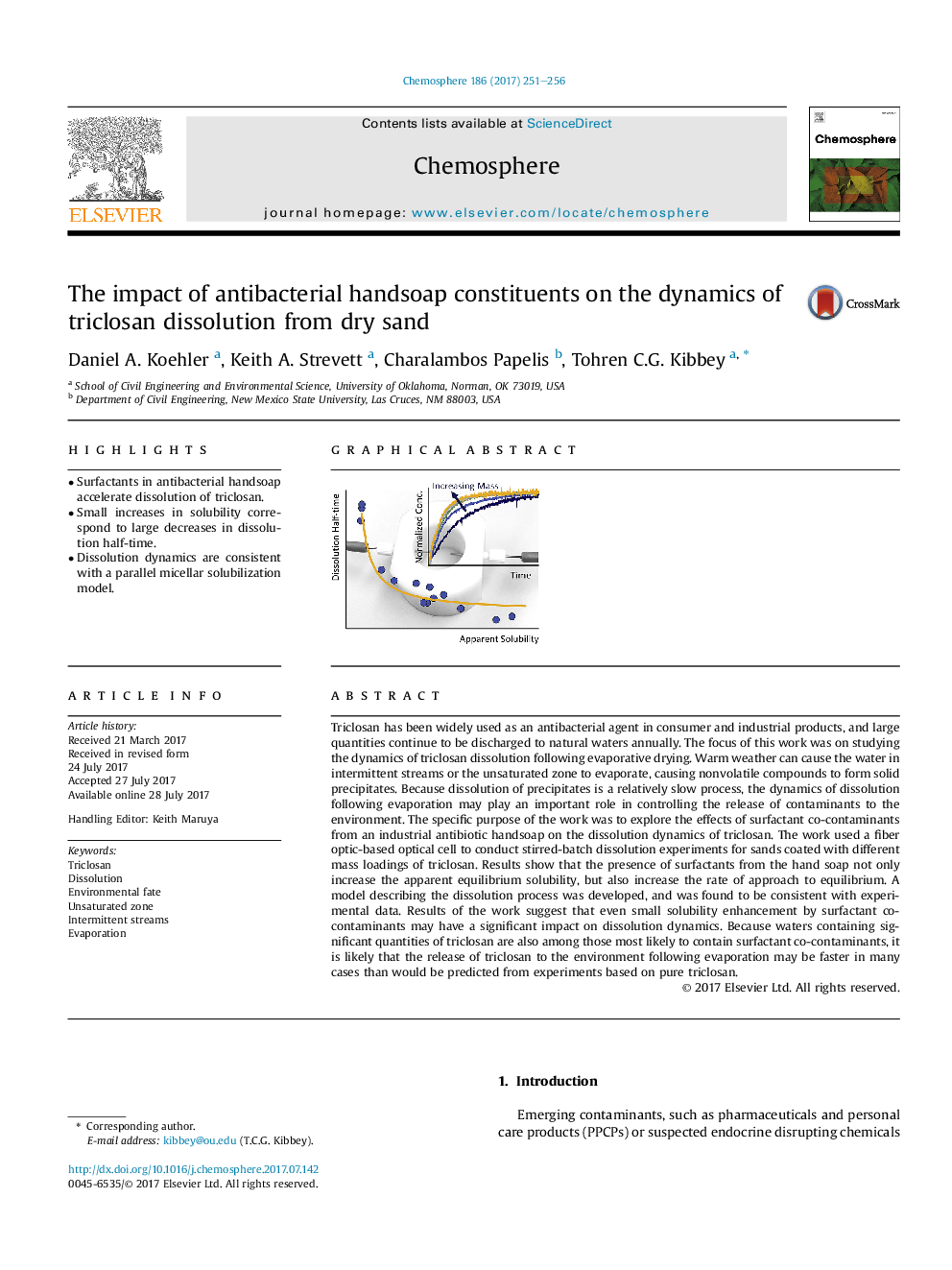| کد مقاله | کد نشریه | سال انتشار | مقاله انگلیسی | نسخه تمام متن |
|---|---|---|---|---|
| 5746018 | 1618785 | 2017 | 6 صفحه PDF | دانلود رایگان |
- Surfactants in antibacterial handsoap accelerate dissolution of triclosan.
- Small increases in solubility correspond to large decreases in dissolution half-time.
- Dissolution dynamics are consistent with a parallel micellar solubilization model.
Triclosan has been widely used as an antibacterial agent in consumer and industrial products, and large quantities continue to be discharged to natural waters annually. The focus of this work was on studying the dynamics of triclosan dissolution following evaporative drying. Warm weather can cause the water in intermittent streams or the unsaturated zone to evaporate, causing nonvolatile compounds to form solid precipitates. Because dissolution of precipitates is a relatively slow process, the dynamics of dissolution following evaporation may play an important role in controlling the release of contaminants to the environment. The specific purpose of the work was to explore the effects of surfactant co-contaminants from an industrial antibiotic handsoap on the dissolution dynamics of triclosan. The work used a fiber optic-based optical cell to conduct stirred-batch dissolution experiments for sands coated with different mass loadings of triclosan. Results show that the presence of surfactants from the hand soap not only increase the apparent equilibrium solubility, but also increase the rate of approach to equilibrium. A model describing the dissolution process was developed, and was found to be consistent with experimental data. Results of the work suggest that even small solubility enhancement by surfactant co-contaminants may have a significant impact on dissolution dynamics. Because waters containing significant quantities of triclosan are also among those most likely to contain surfactant co-contaminants, it is likely that the release of triclosan to the environment following evaporation may be faster in many cases than would be predicted from experiments based on pure triclosan.
224
Journal: Chemosphere - Volume 186, November 2017, Pages 251-256
